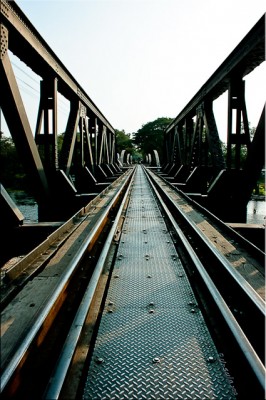
THAT Bridge... over the River Kwai
I love trains and train journeys. There is something hypnotic about the rhythmic clack of the wheels on the tracks. And who can resist waving at the people on trains as they pass?
Kanchanaburi, about 3 hours west of Bangkok (on a good day), is home to what must be one of the most poignant stretches of rail track in the world: what remains of the infamous Burmese Railway. The Death Railway as it is known locally (actually, one signpost reads “Dead Railway”) was built, at great cost of life, by Allied prisoners of war as a Japanese supply line between Bangkok and Rangoon.
“About 180,000 Asian labourers and 60,000 Allied prisoners of war (POWs) worked on the railway. Of these, around 90,000 Asian labourers and 16,000 Allied POWs died as a direct result of the project. The dead POWs included 6,318 British personnel, 2,815Australians, 2,490 Dutch, about 356 Americans and a smaller number of Canadians.[1]” Kanchanaburi is home to many reminders of this grim legacy. More about that some other time…
After the Japanese surrender, about four kilometers of track on the Thai-Burma border was pulled up and never replaced. These days, about 130 kms of track remains on the Thai side and an old train runs up and down carrying tourists.
We rode the train many years ago, and it is a pleasant trip through the sugar cane fields and bamboo forests. This time we drove, which actually presented much more of a challenge, as sign posting to both accessible bits of track disappears and you are expected to choose roads based on intuition!
The last station on the track at Nam Tok is in dense jungle, with the Bilauk Taung Range bordering Myanmar on one side and the muddy River Kwai Noi on the other. Cool caves dot the mountainside while everywhere else the heat radiates without mercy.
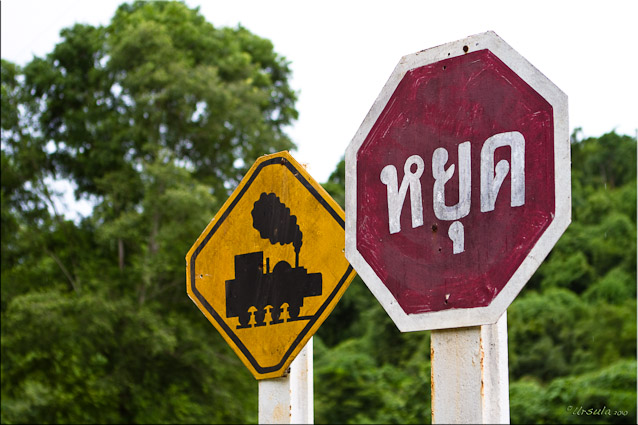
หยุด ~ STOP ~ Train Ahead!
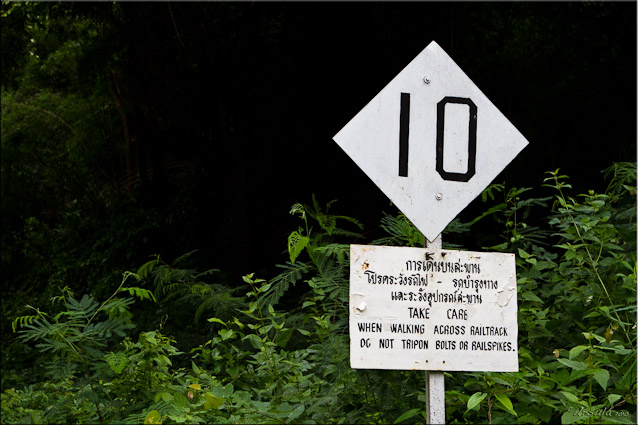
"Take Care... Do not tripon bolts or railspikes."

Teak Wooden Trestles form a Viaduct High over the River

Trestles Rising through the Jungle

Number 53

Curves of the Death Railway and River Kwai Noi

Here She Comes!

Tourists Riding the Rails

Clackety-Clack, Clackety-Clack, Clackety-Clack ...

Wave and Smile!

There She Goes!

Bolts on the Track

Spikes on the Track

If there is a Cave, there will be a Buddha! Kra Sae Cave, Tham Kra Sae

Tourist on the Rails, Outside Kra Sae Cave
Of course, Kanchanaburi offers much, much more than just the railway! We visit annually for the Mizuno River Kwai International Half and Mini Marathon and always find something different to do. This area of rugged mountains bordering Myanmar has all manner of interesting attractions, from prehistoric artefacts and ancient buildings to wilderness areas and magnificent waterfalls. The rivers provide ample scope for boating and rafting, and there are caves of all types to visit. There is birdwatching and elephant riding, and even a “Tiger Temple” where you can get up close and personal to the big cats. But, I’ll save some of that for next week…


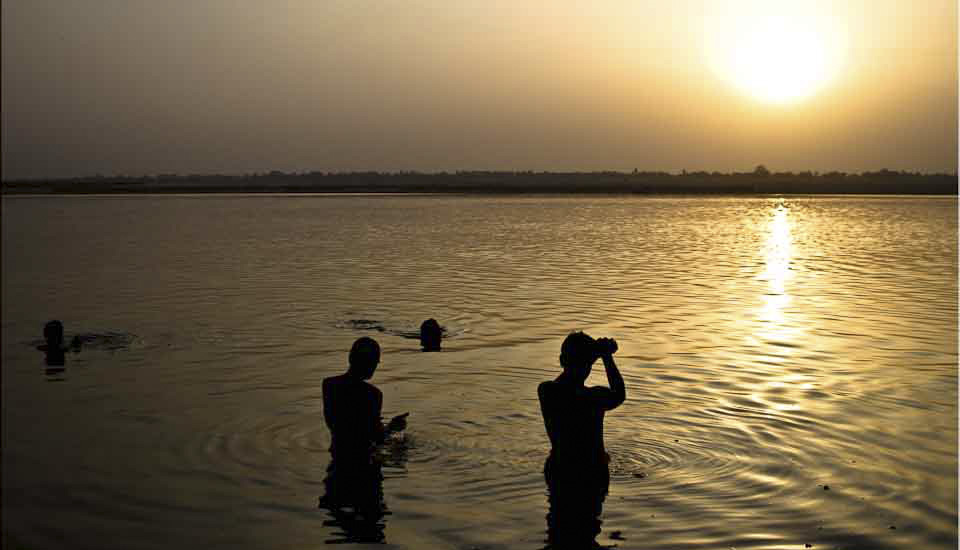
.jpg)


















.png)
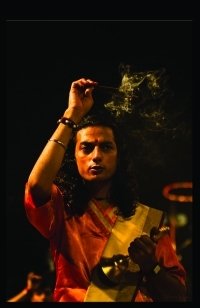
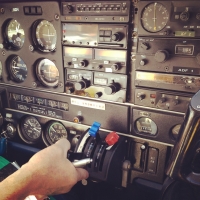
I love this new format…keep em coming!
love to you both
Signe
Thanks, Signe! Talk to you soon. x
Great photos, it is unusual to see the train at this spot from the outside, most pics on internet seem to be taken from inside whilst going over the viaduct.
Thanks, Guava! We were lucky with the train times. 🙂
Nice article Ursula, I do like the detail shots.
Hi Kevin!
I’m glad the system is back and you could get in. 🙂
[…] London… and Around638425On the Rails ~ Kanchanaburi638425The OTHER side of Pattaya638425Chillin’ in rainy Koh Chang…618412History and Beauty ~ […]
[…] Thai soil and were able to force the building of their proposed supply line to Burma: the infamous “Death Railway”. About twenty-two thousand Australians were captured defending British territories in Asia […]